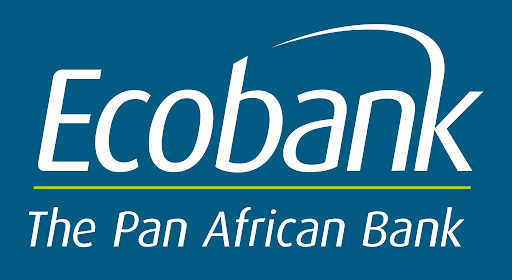The U.S. Soybean Export Council (USSEC), the American Soybean Association’s World Initiative for Soy in Human Health (ASA/WISHH) and the U.S. Grains Council (USGC) co-hosted the African Trade Exchange to strengthen trade with the African continent and discuss partnership opportunities to build demand for U.S. Soy.
In total, nearly 300 U.S. Soy customers and soy industry representatives from more than 30 countriesregistered, and the conference’s virtual platform will allow participants to access sessions on-demand following the event.
The two-day virtual conference took place November 9-10 and showcased globally renowned and highly regarded speakers on the international grain trade, the future of the African feed industry and long-term commercial trade development.
“Africa continues to be a region that holds tremendous potential. It is a great example of where we see a future for U.S. Soy, and our goal is to expand engagement with customers and remain a consistent supplier to this region,” said Jim Sutter, USSEC CEO. “This virtual conference is more evidence of our long-term commitment to the African region in partnership with WISHH and USGC and our optimism on building long-term relationships.”
Sub-Saharan Africa is currently the sixth largest destination of U.S. feed and grain exports, with Nigeria being the largest destination within the region. According to the USDA, soybean and soybean meal feed use in the region are projected to increase by 59% and 35%, respectively, until 2029. These numbers represent an opportunity for boosted demand of U.S. Soy.
“The need for a high-quality protein product like U.S. soybean meal will be vital as this region’s population continues to grow,” said Monte Peterson, Chairman of USSEC, board member of the American Soybean Association and soybean farmer in Valley City, N.D. “Our farmers are prepared to meet this need and show how U.S. Soy delivers proven, consistent quality, reliability and value to earn its role as a trusted partner around the globe.”
Earlier this year, a new comprehensive study reinforced U.S. Soy’s reputation as a global leader in nutrient density and economic value. A meta-analysis of eighteen different studies with 1,944 samples quantified the relationship between country of origin of the bean and the chemical composition and nutritive value of the soybean meal. The analysis provesthat U.S. soybean meal not only has an advantage relative to higher sucrose levels, an excellent amino acid profile, higher digestibility, increased metabolizable energy and lower fiber content (when compared to other origins) but it also has a price advantage. All of which can be beneficial to the sub-Saharan Africa region.
“Identifying new and growing markets in sub-Saharan Africa is part of the long-term strategy to build a strong pipeline of demand for U.S. Soy. The population of this region exceeds 1 billion people, with predictions to double by 2050, making it one of the most substantial frontier markets in the entire world,” said Kevin Roepke, USSEC’s Regional Director for South Asia and sub-Saharan Africa.“Holding virtual meetings like the African Trade Exchange will help us grow and sustain these markets where there is significant future potential due to factors such as large populations, improving economic conditions and low protein consumption.”
Attendees had the opportunity to learn more about the processes of securing credit, hedging risk, formulating rations and many other facets of the international soy and feed grain supply chain. Other topics included: the state of the West African market, a U.S. Soy industry spotlight, aquafeed production, animal feed production and industrial feed compounding.
“Providing technical, economic and logistical assistance is at the heart of the U.S. Grains Council’s long-term strategy in Africa, where the United Nations estimates demand for meat, milk and eggs will quadruple by 2050s,” saidKurt Shultz, Senior Director of Global Strategies for USGC.“Events like the African Trade Exchange are also an important part of our plan to solidify and build relationships in the region.”
The conference also provided an exclusive networking opportunity for USSEC and USGC members to engage importers through the U.S. Grain and Soy Spotlight. The spotlight allowed attendees to participate in a one-hour roundtable, encouraging relationship-building and educational opportunities to learn more about these organizations committed to sub-Saharan Africa.
“Delivering to Africa’s growing protein demand was a priority for U.S. soybean growers when they founded WISHH in 2000. WISHH has 20 years of proven experience working with African entrepreneurs who join us in recognising the importance of protein for Africa’s food security, as well as the economic opportunities it provides for businesses,” said Liz Hare, Executive Director of WISHH. “This conference was testament to U.S. soybean farmer commitment to supplying high-quality protein to the African continent.”
Sessions were held over two days and noteworthy speakers included:
• Clay Hamilton, Associate Administrator and General Sales Manager for the Foreign Agricultural Service
• John Coumantaros, Chairman of Flour Mills of Nigeria
• Emily French, Managing Director at ConsiliAgra
• Andrew Moore, soybean farmer in northwest Georgia and American Soybean Association board member
• Mac Marshall, Vice President, Market Intelligence for the United Soybean Board and U.S. Soybean Export Council
Event Highlights
Clay Hamilton, Associate Administrator and General Sales Manager for the Foreign Agricultural Service, delivered a welcome address to kick off the conference, in which he spoke about the U.S. agriculture’s dedication to the African region.
“We have re-dedicated ourselves to the African continent. This is a tremendous region. It continues to grow and there is so much opportunity here. For us, there are three areas we are focused on: trade policy, technical support, and market development. There is a lot going on with Africa, and this venue is a great opportunity to learn about that and how we can make trading productive.”
In a Q&A with Kevin Roepke, USSEC’s Regional Director for South Asia and sub-Saharan Africa, John Coumantaros, Chairman of Flour Mills of Nigeria, spoke about the development and change he has seen over the past six decades in the region.
“We are celebrating our 60th anniversary not only in Nigeria as a country but Flour Mills is also 60 years old. When we began in 1960 the country was only 35 million people and today it is over 200 million and growing at around5 million people per year. So there lies great opportunity and great challenge here. There has been a large movement of people from the rural sector to the urban sector. In Nigeria it has gone from 62% rural to 48% rural. There is great movement to the urban sector which means there is great necessity for food security. Demographics and the median age have also changed. Currently, 60% of the population the median age is 18,so we have a huge young population which means the need for jobs and investment is also strong.”
Dr. Ayoola Oduntan, Managing Director of Amo Farms in Nigeria, spoke about the demand for protein in the region, during a panel on the state of the West African Market.
“There is a definite demand for protein. Now, it’s very clear that animal protein can’t do it alone. First of all, we use a lot of soybeans in the animal feed space. Soy has become the protein source of choice in animal feed. In order to meet the rising demand for animal protein, we have to consume a lot of soybeans. In addition, there is an effort to increase human consumption of soybeans to augment what is consumed through the animal proteins. We have realized that the need for us to continue to grow this space has led to a significantly higher demand for maize and soybeans.”
Matthew Clark, of FeedGuys and founding member of Genesis Feed Technologies, led a breakout session on maximizing the value of soy in animal feed protection where he discussed the Nutrient Value Calculator (NVC).
“The NVC allows you to look at the economic impact of using different types of soybean meal. Data from Dr. Gonzalo Mateos and his team in Spain sheds more light on the comparative nutrient value of soybean meals from different countries of origin. The NVC processes this data to turn the nutrition information into financial data to make the right purchasing choice. With NVC, you can buy the best soybean meal for your business and reduce your feed costs.”










